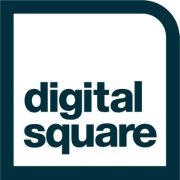Tamanu
Tamanu
Tamanu is a free and open-source patient-level electronic health record (EHR) for desktop and mobile. It allows health workers to track individual patients and provide clinical support. Designed specifically for remote settings and the Asia-Pacific context, Tamanu allows health workers to monitor patients in hospitals, health centers, clinics, and even out in the community, enabling consistent, long-term management of patient conditions. The system is offline-first, with syncing capabilities allowing users to work seamlessly with and without an internet connection. The mobile and desktop versions are fully integrated out-of-the-box, meaning there are no third-party integrations required for any core features.
There are five principles behind the development of Tamanu:
- Sync-enabled works seamlessly offline, whenever internet is down
- Free and open-source
- Desktop and mobile enabled
- Comprehensive security, with data encryption
- Interoperability (e.g. ICD-10) and integration with existing systems, such as DHIS2 and mSupply
Approach
Tamanu is a patient-level EHR specifically designed to address the challenges of healthcare in remote and low-resource settings. It is fully featured but simple to use, completely free, and open-source. It is also a sync-first system across both mobile and desktop, allowing health workers to enter and access data when offline, enabling use in even the most remote settings. Tamanu has mobile and desktop versions that work “out-of-the-box", removing the need for complicated integrations. It is interoperable with major existing systems, and it is highly secure. By using Tamanu, every healthcare professional in an individual's continuum of care is able to access their medical history and treatment plan, and update it on mobile and desktop. This ensure that patient care is consistent, comprehensive and coordinated.
Tamanu provides a full suite of inpatient and outpatient management functionality, including appointments scheduling, admissions, birth registrations, patient management (including treatment notes and recording of observations), medication orders, location (ward and bed) and department management, and recording of discharge medications and summaries. Tamanu enables healthcare workers to call up patient records in near real-time and make changes in any setting that are captured on a patients record, regardless of whether they are undergoing major surgery or attending for a basic check-up.
Tamanu is also able to act as a PMI and this is central to the EHR ecosystem a key pillar not just in Tamanu but other systems requiring access to a patient record (e.g., laboratory and radiology information management systems). A well-maintained PMI is key to ensuring (as much as possible) that the correct patient record is being accessed. The unique patient ID generated by Tamanu is the patients unique identifier and reduces the potential for duplicate records. Individual patient tracking is the gold-standard of data management and health programming, also supporting public health necessities such as disease surveillance. Digitization of patient tracking and management allows patients to move between facilities, allows better epidemiological analysis and enables longitudinal management of patients with chronic conditions.
Tamanu can be integrated with laboratory and radiology information management systems via an HL7 FHIR compliant API. Integration with these systems helps to address significant challenges faced by clinicians when it comes to requesting and receiving diagnostic test results. Benefits of these integrations include the ability to send lab requests and track results electronically, substantial time savings when compared to manual or paper processing orders, elimination of manual result entry and a reduction in errors associated with this process, secure and efficient transmission of patient diagnostic test results.
Tamanu also integrates with mSupply via an HL7 FHIR API. This integration enables mSupply to pull patient details from Tamanu, promoting a central PMI for the hospital and better tracking of individual patients. mSupply is also able to receive medication prescriptions from Tamanu, this will help to streamline clinical practice workflow, reduce paperwork and the errors associated with handwritten notes. There are longer term plans for mSupply to send dispensed medications back to Tamanu so that clinicians have a correct record of the medications a patient has received.
Tamanu’s standard HL7 FHIR API additionally enables the sharing of vaccination records.
Implementations
Tamanu has specifically been designed for remote settings and the Asia-Pacific context. The adoption of Tamanu within the Asia-Pacific has expanded over the years, with many health clinics and also major hospitals now using our solution. Tamanu mobile is also being used by various Ministries of Health around the Asia-Pacific to assist in conducting screenings of non-communicable diseases, Mass Drug Administrations and other significant vertical health programs.
The primary users of Tamanu include the following:
- Frontline healthcare workers who use Tamanu to record clinical patient information enabling consistent and long-term management of patients.
- Hospital and clinic administrative staff who use Tamanu to support the management of patient records, personal information, clinical coding and billing.
- Bilateral partners and donors who use Tamanu for reporting purposes.
Resources
- Website: https://www.beyondessential.com.au/products/tamanu/
- Documentation: https://github.com/beyondessential/tamanu-open
- Articles:
- https://www.beyondessential.com.au/supporting-smoother-travel-for-pacific-islanders-with-covid-19-vaccine-certificates/
- https://www.beyondessential.com.au/tamanu-recognised-at-digital-health-awards/
- https://www.beyondessential.com.au/supporting-the-covid-19-vaccinations-in-samoa/
- https://www.beyondessential.com.au/covid-19-testing-with-tamanu/
